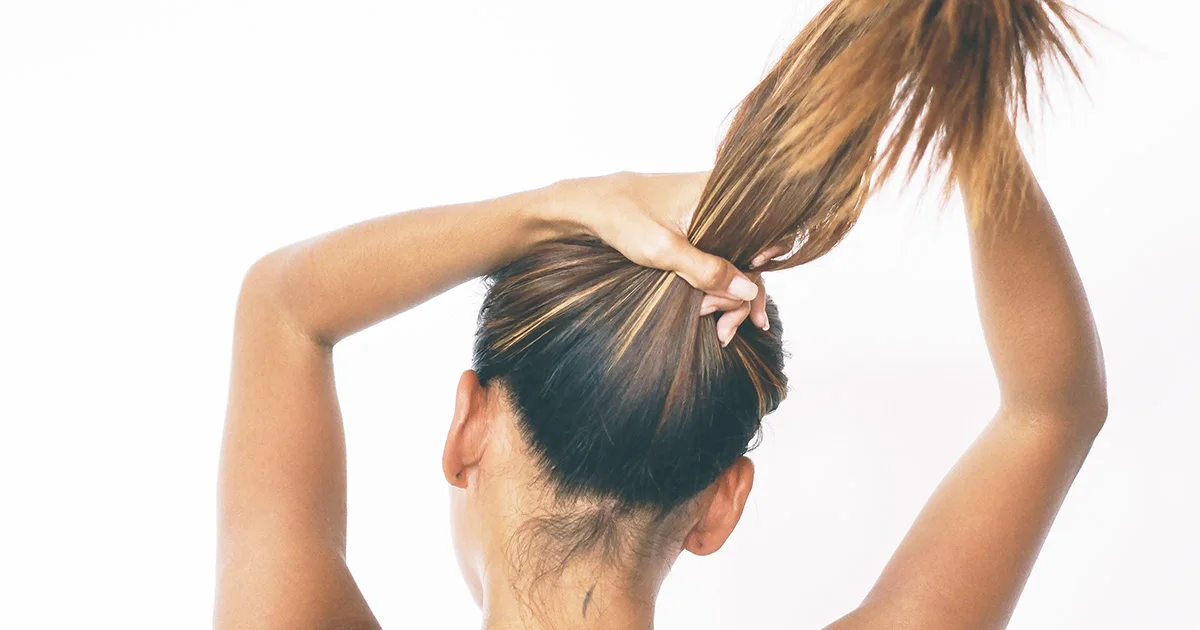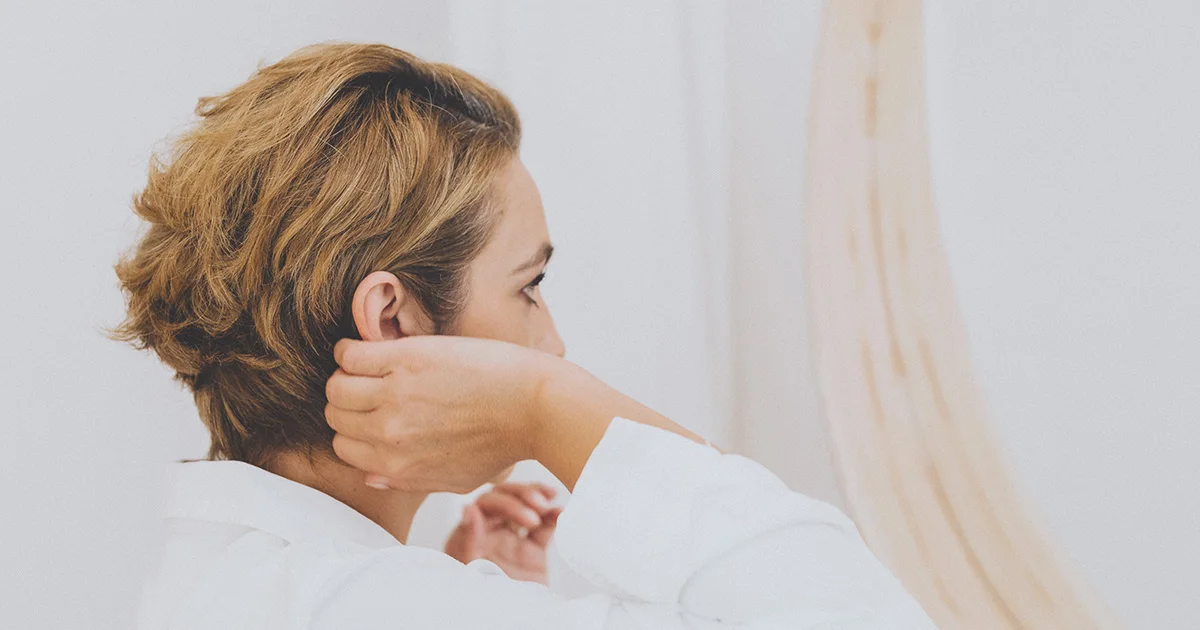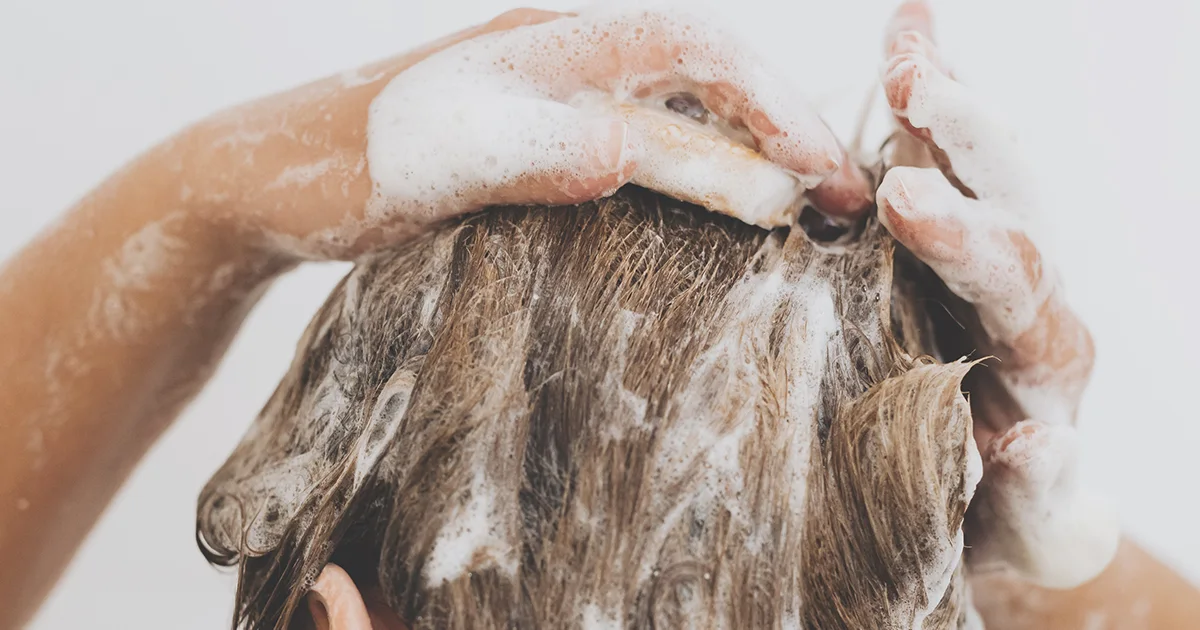Here's what we'll cover
Here's what we'll cover
Dandruff is a common scalp condition in which scalp skin gets dry and flakes off into characteristic white flakes. For some, dandruff causes the scalp to become scaly and itchy (AAD, n.d.). How common is it? Approximately 50 million Americans (and 50% of the adult population worldwide) have dandruff (Borda, 2015). The most common signs and symptoms of dandruff are white flakes throughout your scalp and hair. These flakes are easier to see if you have dark hair or wear dark clothing.
Some people also get dry scalp and itching. Still, it is important to note that dandruff does not usually come with redness or inflammation—if you are experiencing this, you may have a different skin condition. Your flaky scalp may get worse in the winter, especially if your skin gets drier as the weather gets colder (Ranganathan, 2010).
Anti-dandruff shampoo
According to the American Academy of Dermatology (AAD), anti-dandruff shampoos are the most effective treatment for dandruff (AAD, n.d.). Most are available over-the-counter at your local drugstore, but there are also prescription anti-dandruff shampoos as well. Dandruff control shampoos are typically medicated with one or a combination of active ingredients to help treat and control your dandruff. Many of these medications work against skin fungi, like Malassezia, sebum (skin oil) production, and dead skin cell clumping—these factors may play a role in causing dandruff. The most common active ingredients in anti-dandruff shampoos and their mechanism of action are summarized here (Ranganathan, 2010; Borda, 2015):

If you find that a particular anti-dandruff shampoo works for a while and then stops being effective or doesn't work at all, try a medicated shampoo with a different active ingredient. Make sure to follow the instructions on the dandruff shampoo bottles; some require you to leave them on the scalp for several minutes while others need immediate rinsing. Consider also using a moisturizing conditioner afterward, as many of these shampoos are harsh on your hair.
If, after using dandruff shampoo for several weeks, you are still having flaking and itching, see a dermatologist for an evaluation.
Other dandruff remedies
While medicated dandruff shampoos are the most effective treatments for your dandruff, there are other home remedies that you can try (however, these have not been as well studied as the shampoos).
Managing stress: Some studies show that there is a higher rate of dandruff in people with depression and emotional stress (Borda, 2015). Stress may decrease your body's ability to fight off microbes, like bacteria and fungi, making you more prone to dandruff.
Essential oils, like tea tree oil: Several studies suggest that essential oils may benefit people with dandruff and other skin conditions, but more research is needed in this area (Donato, 2020).
Ultraviolet (UV) light: Exposure to UV rays, like those in sunlight, can decrease skin cell growth and dampen the immune response, potentially helping with dandruff. Phototherapy, a specific therapy using UVB light, is useful for seborrheic dermatitis, a condition similar to dandruff but more severe (Pirkhammer, 2000). Exposing your hair to sunlight may decrease your dandruff but also increases your risk of skin cancer, so talk to your dermatologist to see if this remedy is appropriate for you.
How to prevent dandruff
Some things you can do to decrease your risk of having those annoying white flakes include:
Shampooing regularly, especially if you have oily hair, to reduce oil buildup. But don't shampoo too much, or you will strip your scalp of the necessary oils. This leads to dry skin that can also become itchy and flake. According to the AAD, if you are Caucasian or Asian and have dandruff, you should shampoo daily and use dandruff shampoo twice a week (AAD, n.d.). If you are African-American and have dandruff, you should only shampoo once a week using a dandruff shampoo (AAD, n.d.). Talk to your dermatologist if you have questions about how often you should be shampooing and which products to use.
Limit how many products you put in your hair; too much can cause oil buildup and flaking.
Scalps with dandruff tend to be drier than those without. Moisturizing your dry scalp with conditioner may help (Bonnist, 2014).
DISCLAIMER
If you have any medical questions or concerns, please talk to your healthcare provider. The articles on Health Guide are underpinned by peer-reviewed research and information drawn from medical societies and governmental agencies. However, they are not a substitute for professional medical advice, diagnosis, or treatment.
American Academy of Dermatology (AAD). (n.d.). How to treat dandruff. Retrieved Feb. 27, 2020 from https://www.aad.org/public/everyday-care/hair-scalp-care/scalp/treat-dandruff
Bonnist, E. Y. M., Pudney, P. D. A., Weddell, L. A., Campbell, J., Baines, F. L., Paterson, S. E., & Matheson, J. R. (2014). Understanding the dandruff scalp before and after treatment: an in vivo Raman spectroscopic study. International Journal Of Cosmetic Science , 36 (4), 347-354. doi: 10.1111/ics.12132. Retrieved from https://www.ncbi.nlm.nih.gov/pubmed/24749991
Borda, L. J., & Wikramanayake, T. C. (2015). Seborrheic Dermatitis and Dandruff: A Comprehensive Review. Journal Of Clinical And Investigative Dermatology , 3 (2). doi: 10.13188/2373-1044.1000019. Retrieved from https://www.ncbi.nlm.nih.gov/pubmed/27148560
Donato, R., Sacco, C., Pini, G., & Bilia, A. R. (2020). Antifungal activity of different essential oils against Malassezia pathogenic species. Journal Of Ethnopharmacology , 249 , 112376. doi: 10.1016/j.jep.2019.112376. Retrieved from https://www.ncbi.nlm.nih.gov/pubmed/31704415
Pirkhammer, D., Seeber, A., Hönigsmann, H., & Tanew, A. (2000). Narrow‐band ultraviolet B (TL‐01) phototherapy is an effective and safe treatment option for patients with severe seborrhoeic dermatitis. British Journal Of Dermatology , 143 (5), 964-968. doi: 10.1046/j.1365-2133.2000.03828.x. Retrieved from https://onlinelibrary.wiley.com/doi/abs/10.1046/j.1365-2133.2000.03828.x
Ranganathan, S., & Mukhopadhyay, T. (2010). Dandruff: The most commercially exploited skin disease. Indian Journal Of Dermatology , 55 (2), 130. doi: 10.4103/0019-5154.62734. Retrieved from https://www.ncbi.nlm.nih.gov/pmc/articles/PMC2887514/










